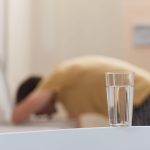Editor’s Note: This article is a reprint. It was originally published December 19, 2016.
Sunlight is good for you. Seriously good for you. In fact, a study shows that people, teens in particular, who spend time outside basking in the sun have better vision later in life.
Conversely, those who don’t get a lot of sun when they’re in their teens or early 20s can expect the opposite. The types of vision problems the study1 showed improvement on included myopia, a type of nearsightedness.
Researchers from King’s College London, the London School of Hygiene & Tropical Medicine and other universities reviewed 371 Europeans with nearsightedness, as well as 2,797 people without the condition, all 65 and older.
Each participant underwent an eye examination, had blood samples taken and had an interview about their health behaviors in previous years, primarily to estimate their exposure to ultraviolet B rays between 9 a.m. and 5 p.m., and between 11 a.m. and 3 p.m.
Those with the most ultraviolet B exposure, especially when they were teenagers and young adults between 14 and 29 years old, had a 30% lower risk of myopia, the inability to see clearly at a distance, than those who had the lowest exposures. However, the link wasn’t meant to prove cause and effect — just an association.
The researchers wrote that myopia is becoming more and more common and is increasingly associated with complications that could ultimately threaten people’s eyesight, or introduce complications. They added that while exposing oneself to sunlight is actually protective, most people have no idea.
Myopia is considered a genetic problem only a mere fraction of the time, but the study authors say that while the environment appears to have something to do with it, it’s not yet clear what that is.
The Problem with Kids Today
It’s notable that 80% to 90% of youth in East Asia have problems with myopia nowadays, while in Europe as well as the U.S.,2 it’s more like 40% to 50%. Research suggests that it’s more common among people who have higher education and less common with people who regularly spend time outdoors.
“Increasing the amount of time outdoors in schools in Taiwan over the past five years has led to decreases in the prevalence of myopia for the first time in 40 years,” said Ian Morgan, Ph.D., a vision researcher and visiting fellow at Australian National University, who was not involved in the study.
A survey done in the United Kingdom (which may be a good representation of youth throughout the world) revealed not only that a fifth of the population that could be called “kids” spend zero percent of their time outdoors but, worse, that 75% spend less time outdoors than — get this — prison inmates.
Nature.org reported the reason for this phenomenon is because, according to 80% of the kids, “it was uncomfortable to be outdoors due to things like bugs and heat.” Sixty percent said they had no transportation so they could travel to natural areas.
Visible Light
Factors such as climate, terrain and geographical coordinates were scrutinized in the study as well, as some climates tend to be rainy or foggy. Some areas of the world have used innovative ways to deal with mountains blocking sunlight availability.
One of the studies covered by the review concluded that there was a 2% decrease in the odds of ending up with myopia for every additional hour spent outdoors per week.3
According to U.S. News & World Report, scientists involved in the study say they aren’t sure that the present myopathy prevalence means that it’s sun exposure that has this positive effect on vision. It might actually be “visible light.” Dr. Donald Mutti, a professor at the Ohio State University College of Optometry, explained:
“UVB here seems to be a proxy for simply spending more time outside. The current thinking is that the brighter light outside stimulates a release of dopamine from the retina and that dopamine slows down the growth of the eye, preventing myopia.
Our group’s work has shown that being outside only affects myopia before it occurs. Once a child needs glasses, being outside has no effect on myopia.”4
Mutti said he believes kids should spend more time outside, but that they should also wear sunglasses and sunscreen; however, these things have the potential to cause other more serious problems.
To Wear Sunglasses or Not
As a matter of fact, “protecting” your eyes from sunlight does more harm than good, because certain wavelengths from light nourish your eyes. Shielding them too often prevents you from absorbing sunlight that’s meant to allow full-spectrum light into your eyes, not just to be able to see but to kick in your brain’s hypothalamus gland.
Your hypothalamus could be considered your master control for everything from your blood pressure to body temperature. It’s in charge of balancing your body clock and circadian rhythm, and natural sunlight is essential to this process. Without it, your body has trouble functioning properly.
Think of it like this — Light deprivation to your eyes, aka mal-illumination, could be compared to malnutrition to your body. Not just your bare skin requires 20 minutes of sun exposure every day, your eyes need sunlight, too. Mark’s Daily Apple notes the results of one experiment:
“Researchers trying to study the link between light exposure and myopia exposed chicks to various amounts of light. Normal laboratory lighting was 500 lux, ‘intense’ laboratory lighting was 15,000 lux, and sunlight was 30,000 lux.
Only intense lab light and sunlight were able to retard the development of myopia, while normal lab lighting — which is still quite bright and very similar to standard office lighting conditions — did not adequately protect.
Note that direct sunlight is ridiculously bright (up to 130,000 lux), while just being outside in ‘full daylight’ will provide plenty of light for your retinal dopamine labs …
Just be outdoors and the sun will take care of the rest. If you can see stuff, that means light is getting to your eyes; it’s from the sun (and thus bright enough) and you’re good to go.”5
A note about going under the sun, however. If you consume a diet that’s high in seed oils, which are loaded with linoleic acid (LA), it is best to avoid intense sun exposure during peak hours. This is because seed oils can accumulate in your skin and are then oxidized by the sunlight, causing inflammation and skin damage.
To protect your skin’s health, eliminate seed oils and processed foods for at least six months, allowing your body to rid itself of most of these harmful fats, so you can reap the sun’s health benefits without the toxic side effects. Once you’ve fully eliminated LA from your diet, you can resume getting sun exposure at solar noon.
Myopia in Relation to Other Eye Diseases
Nearsightedness is measured in diopters (D), the same way eyeglasses and contacts are measured. Corrections are preceded by a minus sign (-) and measured in 0.25 D increments. Myopia of -0.25 or -3.00 is considered mild, moderate can be 3.25 to -6.00 and anything higher is characterized as high.
Both medium and high myopia can be associated with “serious, vision-threatening side effects,” it’s termed “degenerative” or “pathological.”
More people have this condition today than they did just 30 years ago, and the prevalence is growing both steadily and alarmingly. In fact, in the early 1970s, around 25% of people living in the U.S. were affected. Thirty years later, it’s jumped to 42%.6
For whatever reason, nearsightedness seems to play a role in the prevalence of other eye diseases, some of them quite serious, such as:
• Cataracts — Another study showed that cataracts, characterized as the lens of the eye becoming progressively opaque and resulting in blurred vision, tend to develop more quickly in people who have high myopathy, especially Koreans. Additionally, cataract surgery outcomes are not as successful.
• Glaucoma — A condition that causes damage to the optic nerve, glaucoma is often linked to pressure building up inside the eye. Even mild cases of myopia are associated with greater incidence of this eye disease.
An Australian study reported that nearsighted individuals are two to three times more likely to suffer from glaucoma than those without myopia.
• Retinal detachment — American Journal of Epidemiology reported on a study in which scientists concluded that myopia was a “clear risk factor for retinal detachment.”7 All About Vision noted:
“Eyes with mild myopia had a four-fold increased risk of retinal detachment compared with non-myopic eyes. Among eyes with moderate and high myopia, the risk increased 10-fold.”
The study also noted that about 55% of retinal detachment cases not caused by trauma can be attributed to myopia.8 Further, people with an elongated eye shape (axial myopia) have a 1.72% greater risk of this condition after cataract surgery, as opposed to 0.28% among people with a rounder eye shape.
Does the Food You Eat Have Anything to Do with Eye Health?
While experiencing moderate amounts of skin exposure to sunlight also increases your vitamin D levels, the authors of the study said it has no connection to nearsightedness. The researchers also noted:
“The recommendation for children to spend time outdoors provides an attractive option, and intervention studies are in progress. However, it remains unclear which of the numerous elements associated with time spent outdoors, such as light intensity, ultraviolet radiation (UVR) or distant focus, confers the reduced risk of myopia.”
Not just the amount of sunlight your eyes are exposed to, but also the foods you eat affects your eyesight, now and later in life. Harvard Health lists9 a number of nutrients your body needs to optimize your eyesight and several foods that provide them:
Lutein and zeaxanthin can be found in several brassica foods, such as broccoli, Brussels sprouts, collard greens, kale, Romaine lettuce, spinach, squash and eggs.
Animal-based omega-3 fatty acids are found in the greatest concentrations in wild-caught Alaskan salmon, sardines and krill. Remember to consume omega-3s in moderation, as they are also polyunsaturated fats (PUFA) that is harmful in excessive amounts.
Vitamin A is found in good amounts in apricots and cantaloupe.
Vitamin C is present in grapefruit, kiwifruit, oranges, red peppers and strawberries.
Vitamin E is found in broccoli and spinach.






